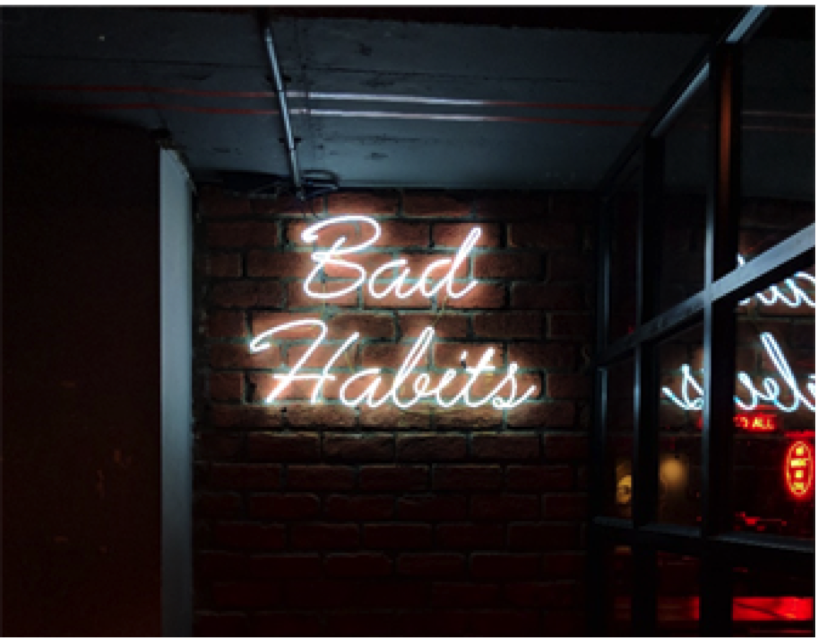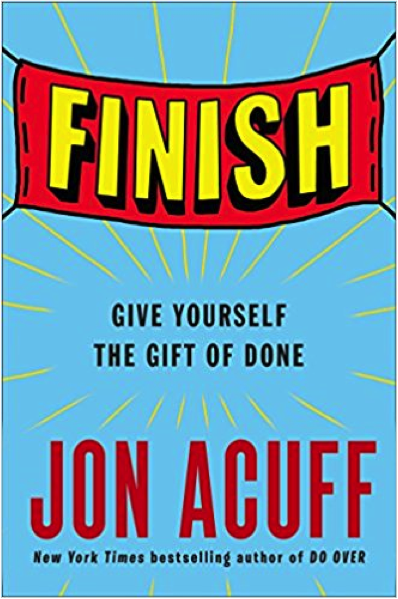With AI (artificial intelligence) dominating the news these days, and Google, Facebook, and Amazon spending billions on automated systems…
… It’s easy to forget about the biggest computer and most automated system of them all… your brain.

We all know that the 3-pound glob of goop between your ears is the most complex thing in the universe.
But what we don’t always know is how to program the damn thing!
So in today’s blog post, I’m going to show you how… after I address the major stumbling blocks…
… There are 2 major problems when it comes to self-programming.
First, we don’t create airtight systems so we have to reinvent the wheel on a daily basis when it comes to projects, planning, productivity, and profits.
Second… the internal systems we HAVE relegated to autopilot status (aka: HABITS), are a frustrating case of the inmates running the asylum.

We have locked-in behaviors that constantly shoot us in the foot… like procrastination, giving up too easily, never getting organized, eating badly, starting projects but never finishing…
… Taking on too much and getting overwhelmed, wasting hours on social media, never exercising, and getting lost following endless rabbit trails when researching online.
And if you have any books (or shelves full) that you haven’t finished… or have only read 10 pages of… you know what I mean.
Even worse, we continually waste our energy by struggling to change… with thousands of hours spent (and tens of thousands of dollars) on self-help books, courses, and seminars…
… With nothing to show but frustration and proof that we’re stuck being failures in some areas of our lives.
So if endlessly reading about successful people’s lives… and their successful habits… hasn’t been transformational…

… SURPRISE… you’re not alone.
That’s why success books continually become best sellers.
Because they keep offering hope that’s never realized.
It’s like dieting books… they almost never work, but they sell like hotcakes.
BUT FEAR NOT… no matter how jaded you are!
The real solution awaits in the following blog where I’m bringing you proven strategies for lasting change.
In no time I’ll have you creating automatic systems that are programmed into your life… so you don’t have to rethink anything and you don’t have to relearn anything.
What do you call those kinds of systems?
HABITS… they control about 45% of our behaviors.
And I’ve got 3 hot books that can actually produce the changes you want.
Here’s the first…
#1: Want Massive Productivity? Small is the New Big!

Few of us are actually lacking in brains, creativity, or desire… which makes it more infuriating when we don’t get more done.
But it’s no wonder when almost half of what we accomplish is ALREADY on autopilot.
In other words, in our heads we’re running other people’s programs and software…
… Or running programs we selected and installed when we could barely tie our shoes… hardly the informed choices of the high achiever.
That’s why 45% of our behaviors happen automatically… for better or worse.
Enter transformational book #1:
“Mini-Habits: Smaller Habits, Bigger Results!”
Here’s an approach that’s already helped me with my own workload.
Especially when I’m facing an intimidating long-form sales letter or a 10-email campaign series that’s gotta be done yesterday.
This may seem like old news, but it’s not.
It’s by breaking things down into tasks so small they seem ridiculous.
A sign of the right size task is that it seems, “stupid small” and “so small it’s impossible to fail.”

For instance, the author, Stephen Guise, had struggled for 10 years to make the usual changes… go to the gym, read more, write a novel, eat better, learn a language.
But whenever he faced any of these tasks, he felt immobilized.
Then one day, while trying to start a 30-minute exercise program, he tried the usual up-tempo music, visualizing himself with a beach body, an internal pep talk… “Come on Stephen, true champions put in the extra work!”
And long story short, he decided to reject all that and do just ONE pushup.
His brain rebelled, saying there was no point, that he was pathetic, and who did he think he was fooling?
But he did the ONE pushup anyway… and it completely changed his life.
How? Because he wanted to know WHY he could easily do that one pushup.
So Guise began investigating motivation, will power, psychology, reward and punishment, and research studies about habit formation.
He also wanted to know why the usual methods didn’t work.
For instance, how long does it take for a new habit to take hold permanently?
It’s not 21 days.
Where did that myth come from?
Back in 1960, when Psycho-Cybernetics was first published, plastic surgeon and author Maxwell Maltz saw that patients took about 21 days to get used to having a limb amputated.
So Maltz concluded that was the norm for habit formation and it’s been widely accepted ever since.
The reality?
A 2009 study, published in the European Journal of Social Psychology, concludes that 66 days is much more realistic… and that it varies with the habit you’re trying to change.
So if you’ve persevered for 21 days, but with no results, you may be on the right track… it may just take longer.
And before you say, “I’ve heard this all before,” listen to what Stephen Guise asks:
“What if your failure to take action and stick to your plan was never a problem with you, but a problem with your strategy — the strategy that most of the world uses and endorses? And what if the science about human behavior, willpower, and the brain suggested a better alternative for sticking to your plans — one that is rarely practiced or promoted?”
OK, keep all of the above in mind as we dig into our next habit breaker and builder…
#2 All Your Habits Boil Down To This 3-Part Pattern
Our next book, The Power of Habit: Why We Do What We Do In Life and in Business, not only delivers on its promise to explain the motivation behind the things we do, it does so in a fascinating series of stories and research-backed examples.
And it doesn’t stop there. “Habit” outlines everything you need to know to add, remove, or change just about any habit you’d like.
The simplicity is revolutionary and you may find hope as you read this one.

The book defines habits as:
“… the choices that all of us deliberately make at some point, and then stop thinking about but continue doing, often every day.”
It goes on to offer this mildly chilling insight:
“Most of the choices we make each day may feel like the products of well-considered decision making, but they’re not. They’re habits.”
So basically, we’re all coasting along on autopilot about 45% of the time, according to the author, Charles Duhigg.
With the application of the wisdom found in this book and a little reworking of patterns, widespread life-altering changes are suddenly within arm’s reach.
We’ve all wondered at some point how a friend or acquaintance has defied the odds and made major shifts in their lives and habits… now the recipe is finally available.
It all boils down to a 3-part system of cue-routine-reward.
We’ll dig into that in a second, but first let’s look at some of the wild and inspiring examples peppered throughout the book:
>>> How Starbucks life-altering emotional regulation and life skills proprietary training helped a kid raised by severely drug-addicted parents to go on to manage 2 stores and 40 employees…
>>> Why Michael Phelps early coaching interventions and training allowed him to break a world record while swimming blind…
>>> How Alcoholics Anonymous has existed for decades and EXACTLY why it works…
>>> The pregnancy-prediction tool Target developed to market directly to moms with babies…
>>> How one classification decision by The Library of Congress completely altered the Gay Rights Movement…
Duhigg opens with a more relatable story for most of us, of a young woman who started smoking and drinking at 16, was $10,000 in debt by her mid-twenties, struggled with obesity and who couldn’t hold a job for more than a year.
Then came changes worth celebrating…

She went on to become part of a group of people being studied because they had managed to make massive changes.
At the time of the study, she didn’t smoke or drink anymore, was lean and fit and had been working as a graphic designer for over 3 years.
Her changes all rested on having started with what’s known as a “keystone habit”.
By focusing on just one pattern change, she had changed her entire life.
And more often than not, that’s how full-blown life overhauls happen.
According to The Power of Habit everything relies on this pattern (from a chart in the book):

“Habit” explains it like this:
“We know that a habit cannot be eradicated – it must, instead, be replaced. And we know that habits are most malleable when the Golden Rule of habit change is applied: If we keep the same cue and the same reward, a new routine can be inserted.”
So no matter what habit you’re looking to shift, that’s the formula.
In order to be successful, it’s also important to know what’s driving your behavior.
Is it boredom?
Anxiety reduction?
Feeling lonely?
Or something else.
One part in the book suggests that keeping track of these things, doing some research on your motives for continuing the behavior, is critical.
That way you’ll know what kind of activity to replace your habit with.
For example, if you’re looking to curb your nighttime snacking, the cue might be when you turn on the T.V.
Then the routine is snacking.
And the reward might be to curb your boredom by having something to do with your hands.
In order to change your habit, you would replace the snacking with something like knitting or drawing.
Or course, Charles Duhigg never implies that changing habits is a breeze.
But knowing exactly how to do it, based on decades of research, is the best place to start.
This book is the real deal… right on target!
NOTE: Sorry to leave you with the mystery of the examples above (Starbucks, Michael Phelps, etc.), but this book is such a must-read that I promise you’ll thank me for it when you can’t help but go out and pick up a copy of your own.
#3 Counterintuitive (Brilliant) Advice to Finally Finish What You Start
 If you’re tired of the hype and hoopla of the typical goal-completion crowd, but still want the results, then sail on in to this harbor of hope, clarity and completion.
If you’re tired of the hype and hoopla of the typical goal-completion crowd, but still want the results, then sail on in to this harbor of hope, clarity and completion.
Jon Acuff has done the world of chronic starting (but never quite finishing), a huge service.
He’s crawled inside the mess in our minds with his book, Finish: Give Yourself the Gift of Done.
It’s full of tricks and techniques to finally FINISH those false starts and half-done projects.
So if you’re actually looking to complete those elusive goals you’ve been shaming yourself about for years, make it easy on yourself and run to your nearest bookstore.
Here are 3 ways you can get started today, to tide you over until you pick up your own copy:
Chapter 1: “The Day After Perfect.”
Take into consideration the impact of perfectionism and how it can subtly compel you to lose your footing and stop working towards your goals.
With perfectionism at the helm, every slight detour is cause to give up altogether.
Jon puts it like this:
“We will gladly give up the whole thing when we discover some error or imperfection in our performance. More than that, we will even pre-quit before we’ve even begun.”
Chapter 2: “Cut Your Goal in Half.”
Fairly self-explanatory, but take a moment to consider…
… What is the worst that could happen if you either cut your goal in half or doubled your timeline?
It’s a good question, and part of the action items at the end of Chapter 2.
Why on earth would we give up rather than cut it in half or give ourselves more time?
Chapter 3: “Choose What To Bomb.”
Are you sitting down?
Turns out, you can’t have it all.
Obvious? Yes!
But to actually finish what you’re working towards, you have to make room in your life and schedule.
That means something has to be put on hold or stopped altogether to create room in your life for what’s important to you.
According to our author:
“You only have two options right now. 1. Attempt more than is humanly possible and fail. 2. Choose what to bomb and succeed at a goal that matters.”
He provides examples such as social media, keeping up with current T.V., and cutting his own lawn.
Your choices may be different, but the effect is the same.
Deciding which ball to drop is critical.
So if something’s gotta give, why not be the one to DECIDE what it’s going to be… instead of having the decision forced upon you by bad planning?
Oh… and Jon’s writing is hilarious.
I had to stop calling my wife in to read aloud every funny thing, another mark of a quality read.
Case in point from Chapter 4:
“Crawl in the mud all you want, open-mouth kiss electrical wires. Fill your pants with moray eels. I don’t care. The best way to accomplish something is just the opposite of all that. Fun isn’t optional. It’s necessary if you’re going to kill perfectionism and make it through to done.”
He really provides a great visual, while at the same time introducing an important and often overlooked element to accomplishment… having fun.
There’s no shortage of equal parts counterintuitive and brilliant suggestions littered throughout.
So I hope this whets your appetite to DO something about sabotaging your success.
OK, that’s it for this week.
Make sure you START a new habit immediately after reading this.
And leave your comments below!
Didnt see a way to order if I wanted one.
I did not understand what you mean.This theme seems be very very interesting but you do not got to the point.The question is HOW?
Thanks Dan. This just may be what the doctor ordered!
That was enlightening, Jack. Thanks!
I knew about the Cue and Routine (one that I’m trying to change these days by replacing it with something better), but I didn’t know about the reward dynamic. But now, clear as a bell, it all makes sense. Thanks for that! This post just put me back on the path to working on my oil paintings every evening. And that should help me teach my son, in the process.
Much appreciated!
Jeremiah
Great suggestions – I’ve put them all on my ‘shop for these’ list.
Yeah, I’d like to get the insight from 3 books in one nice synopsis article too – but I hardly never expect to see that happen. The pointers are much appreciated.
Timely suggestions, Daniel. Thanks for this great guest post!